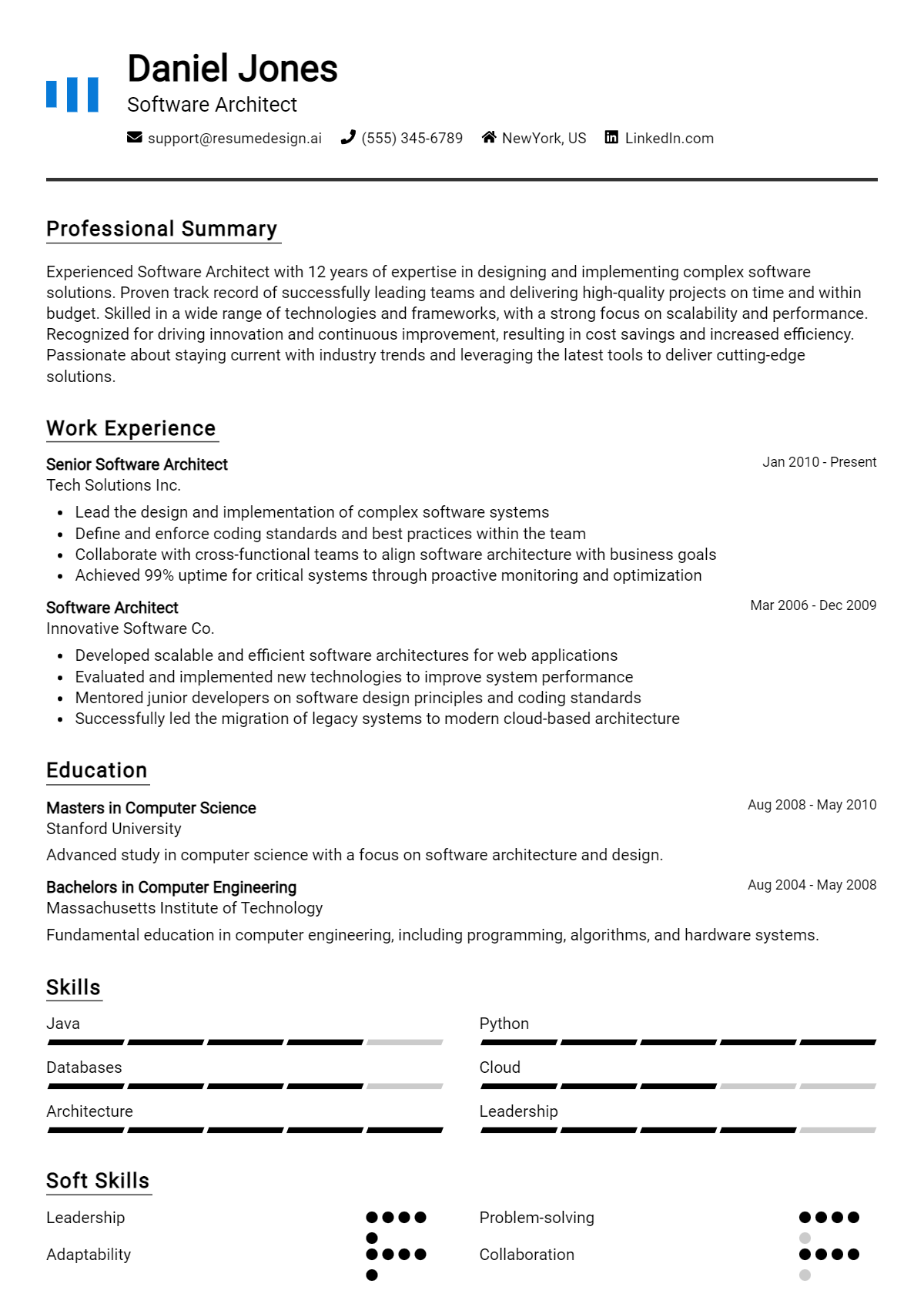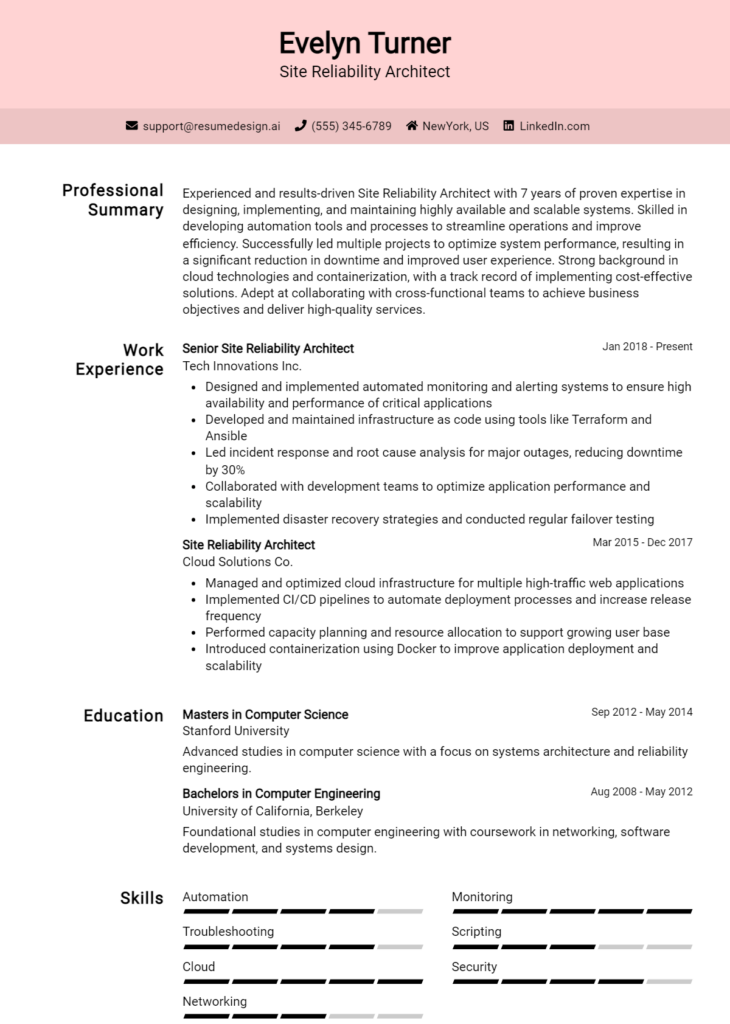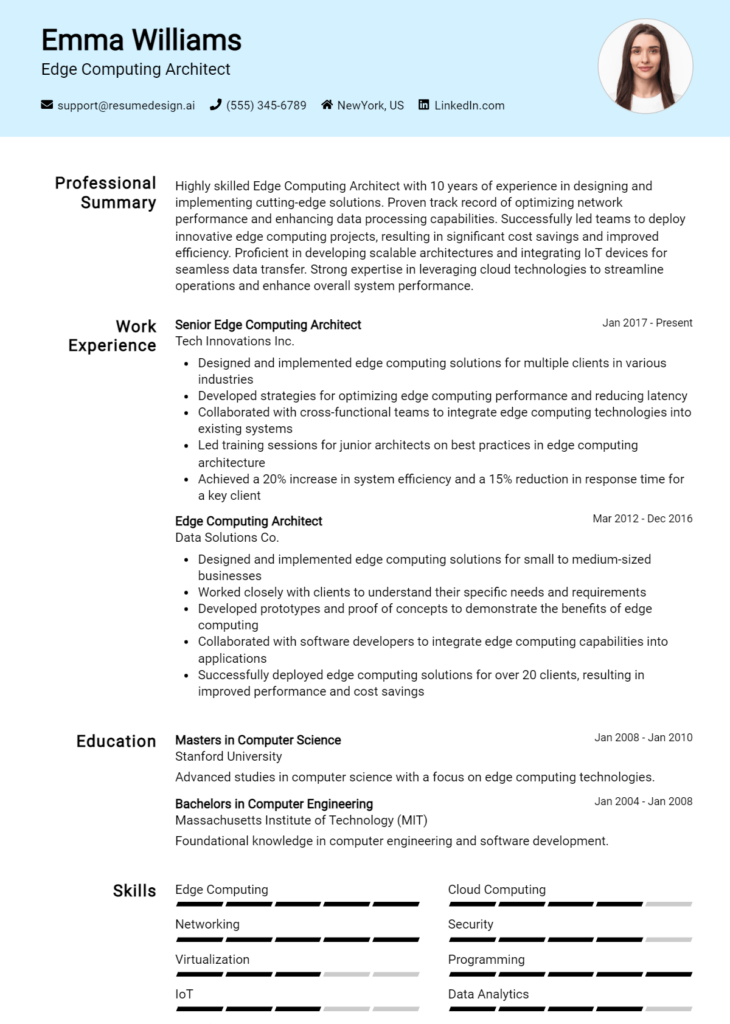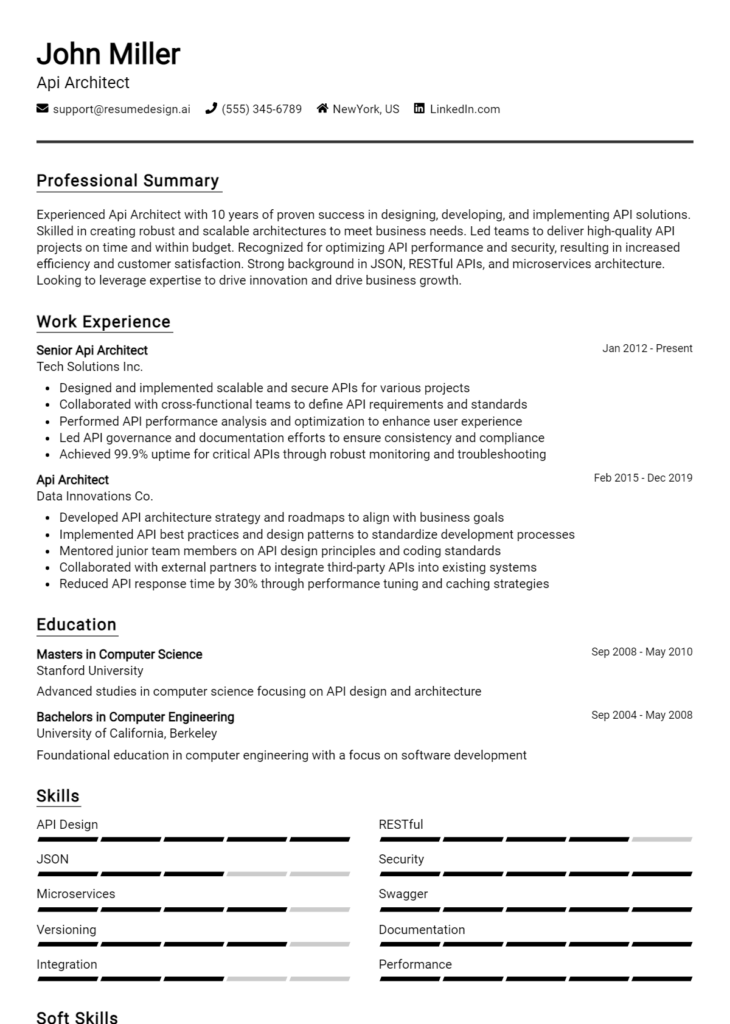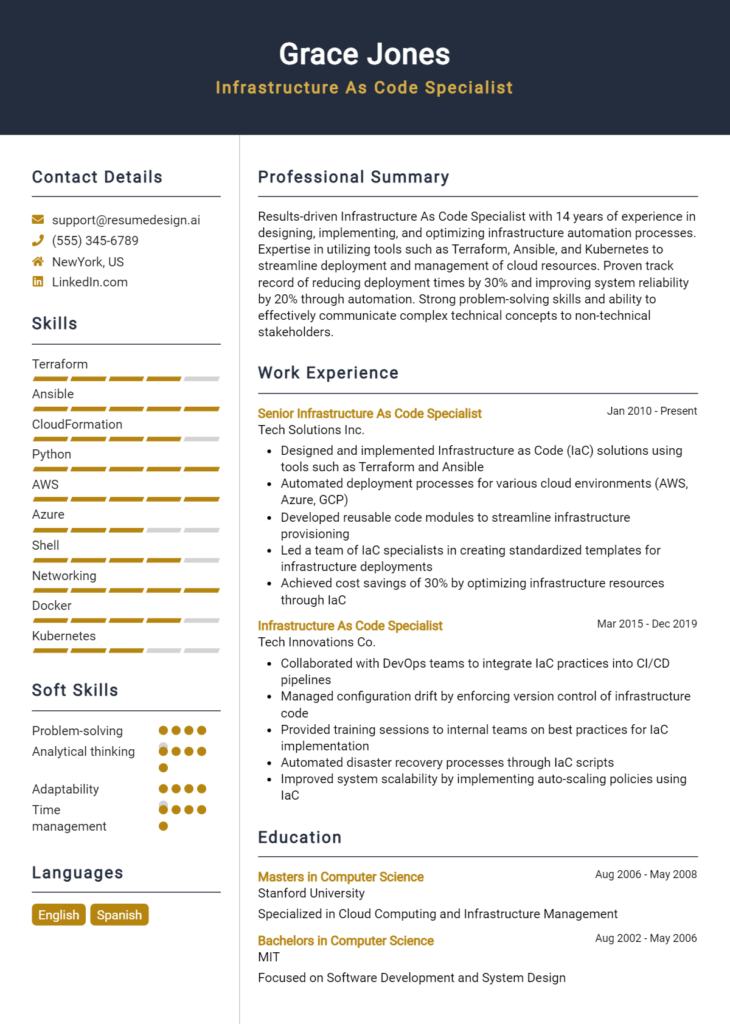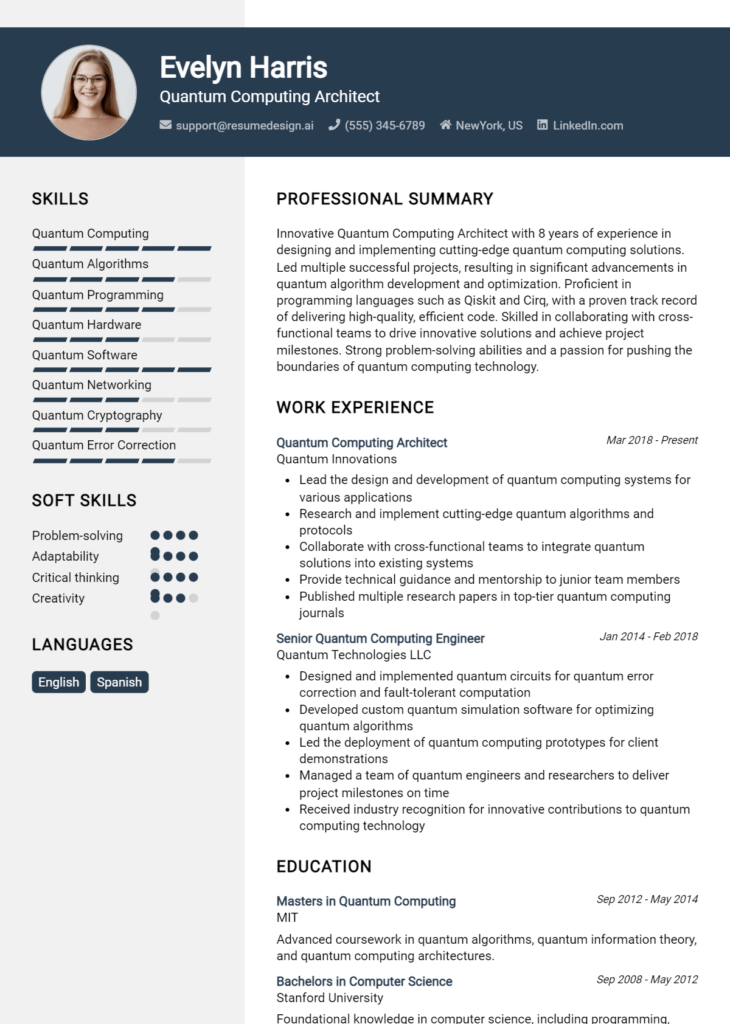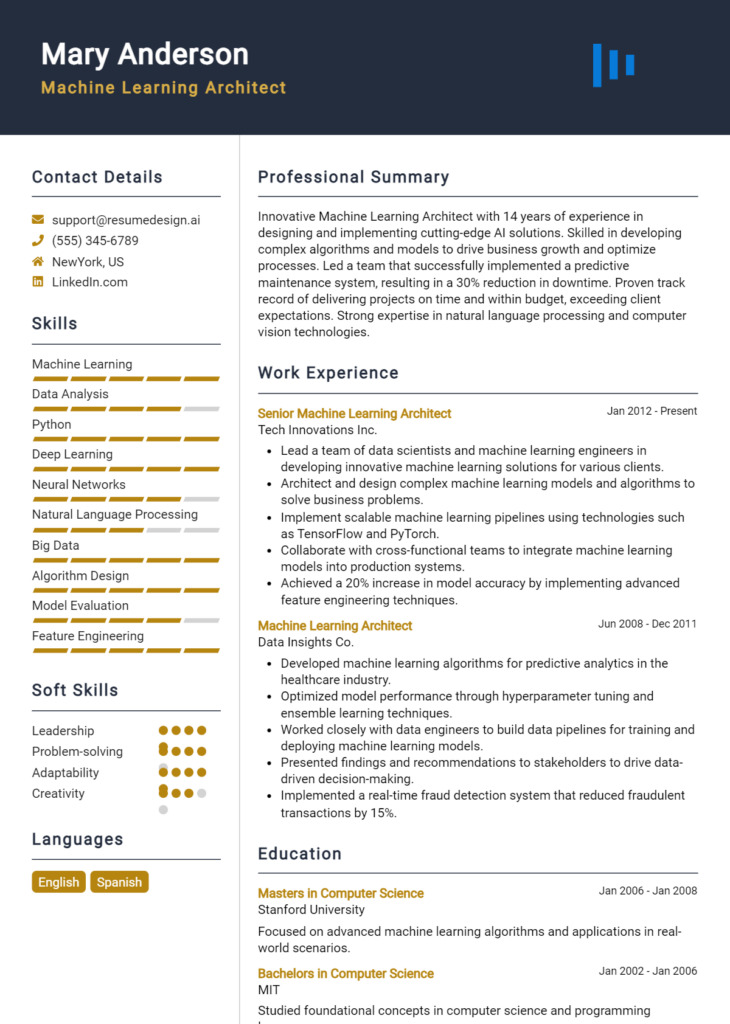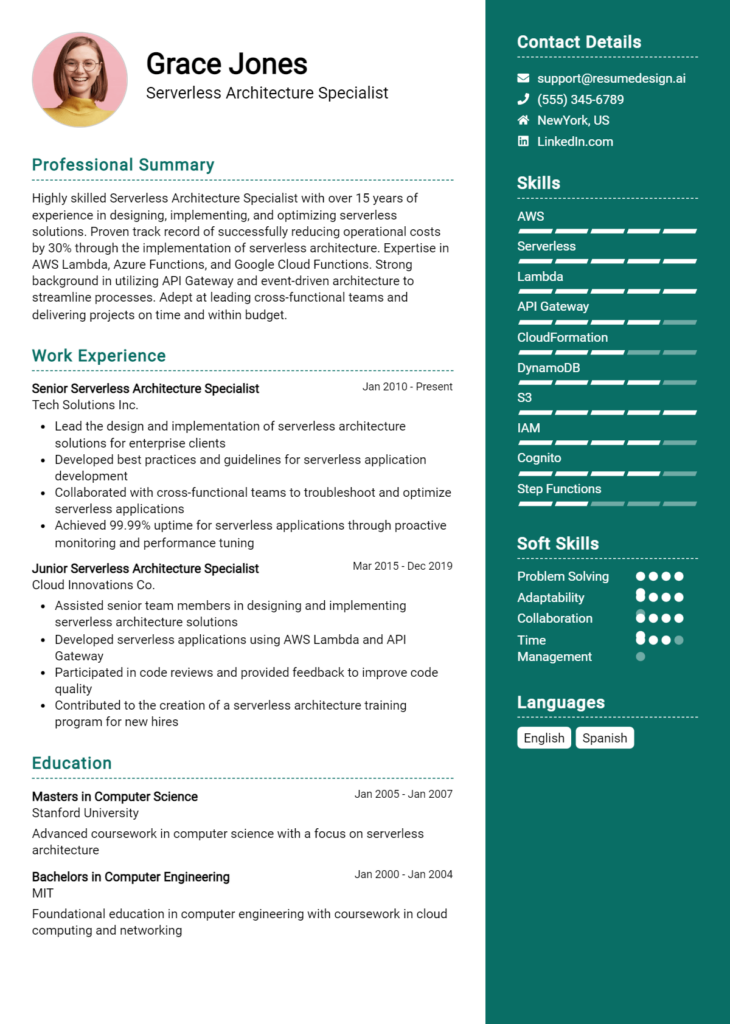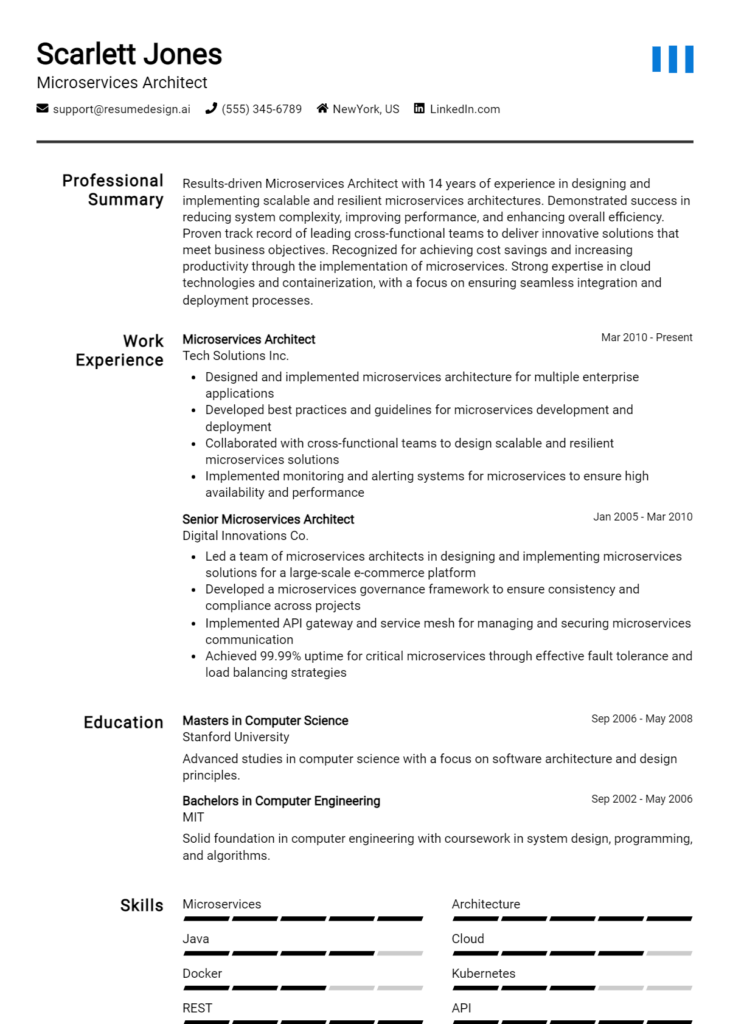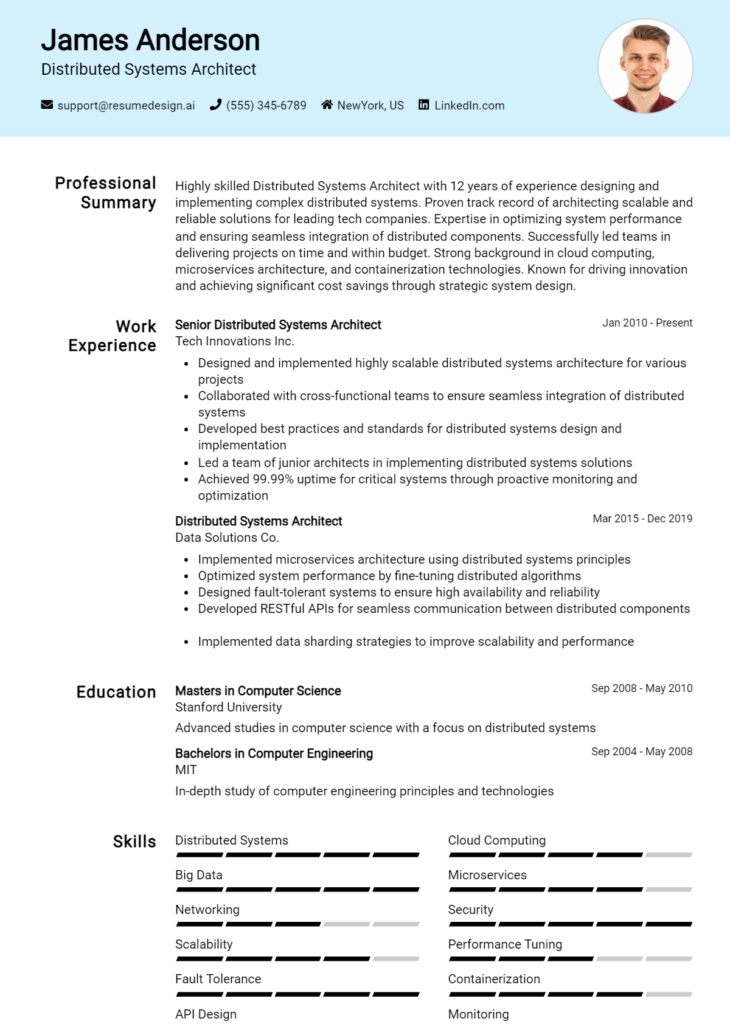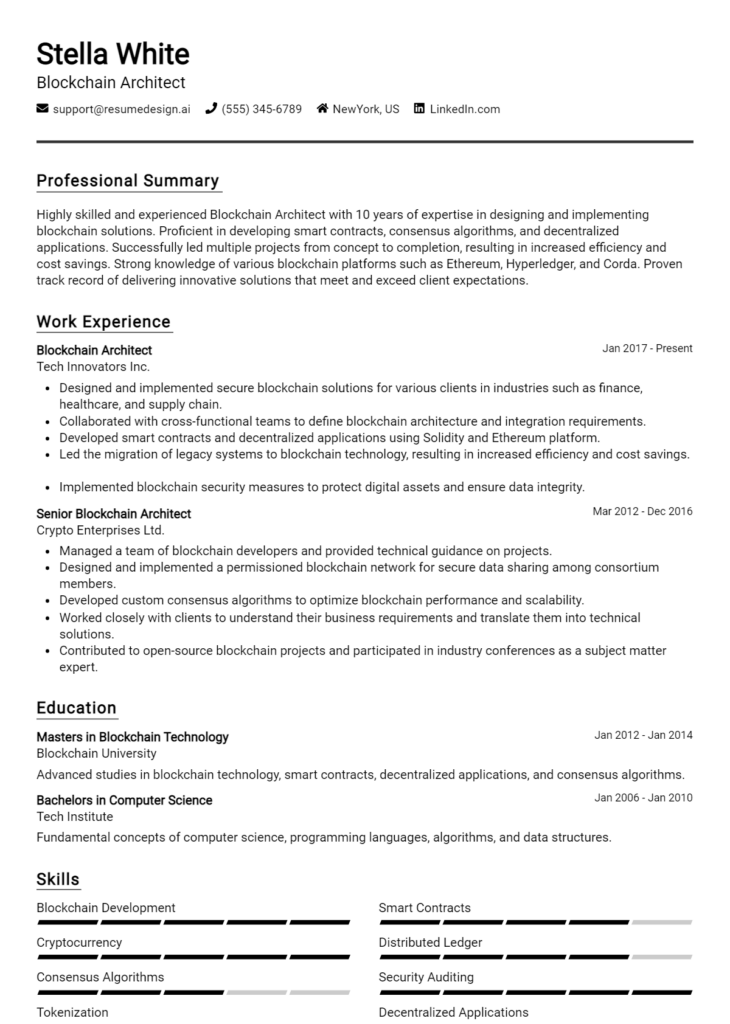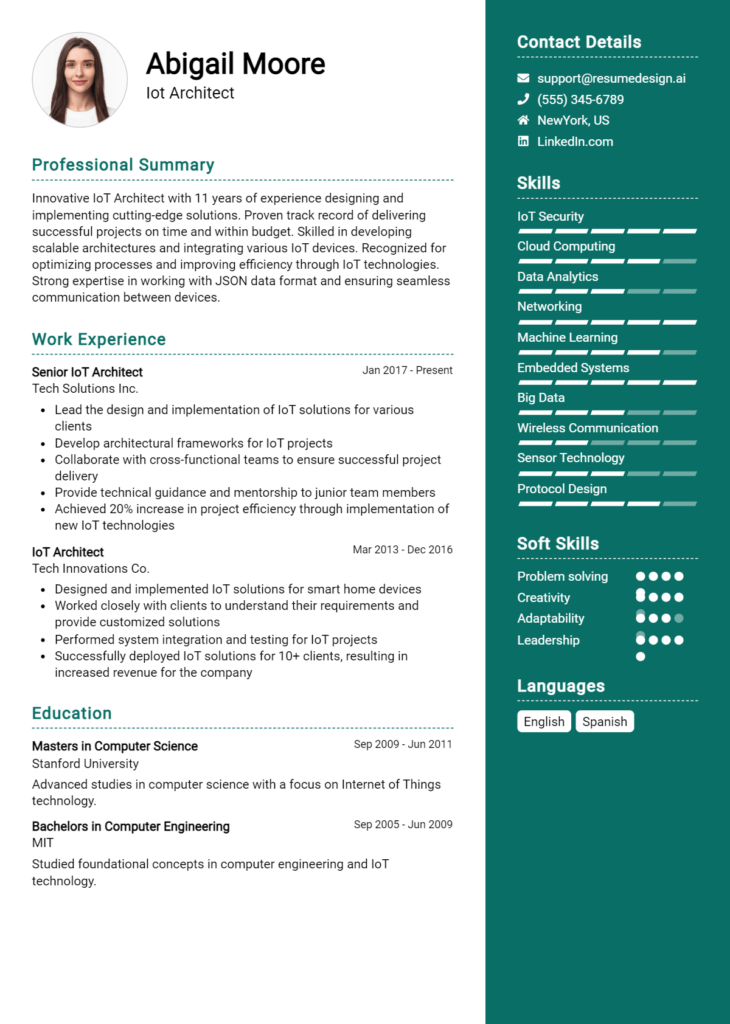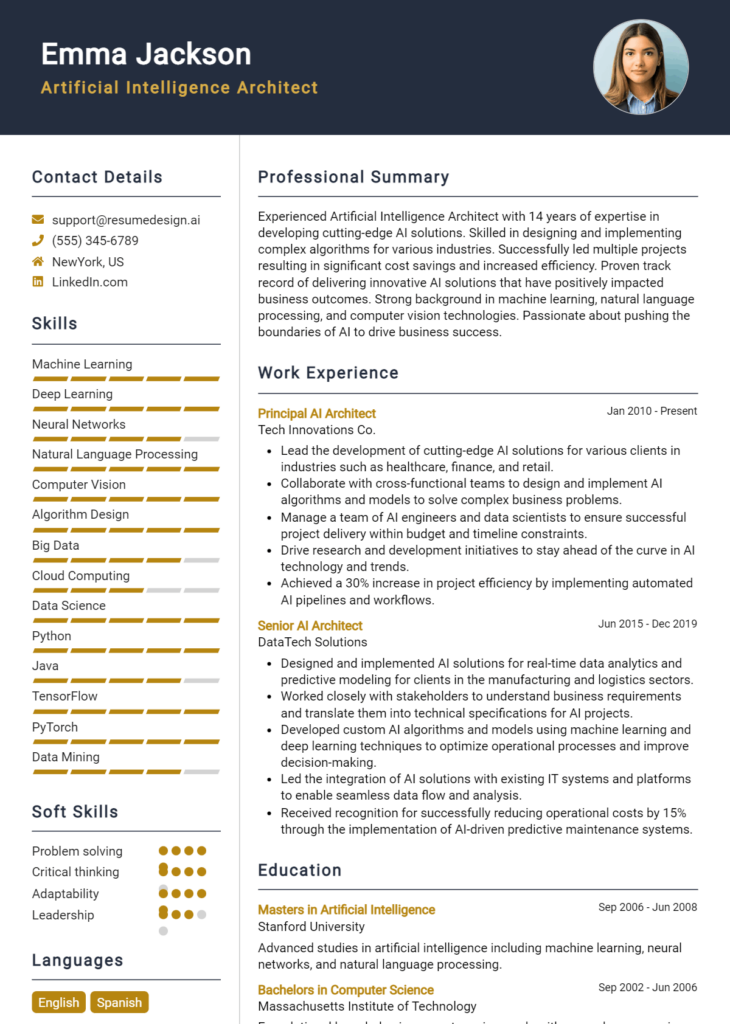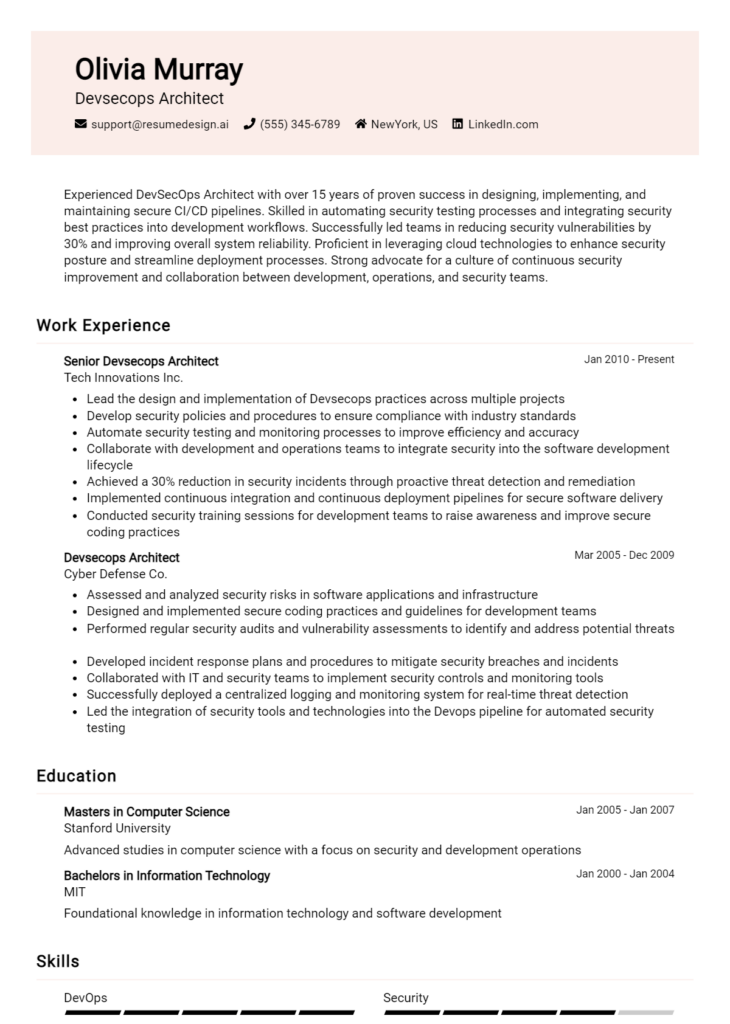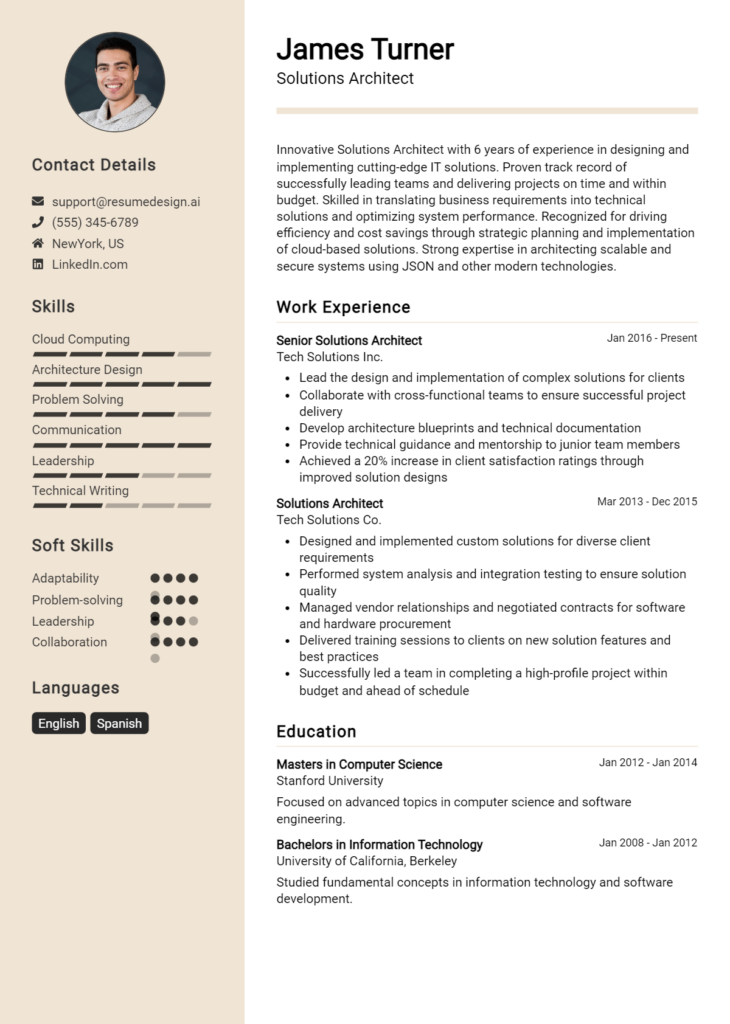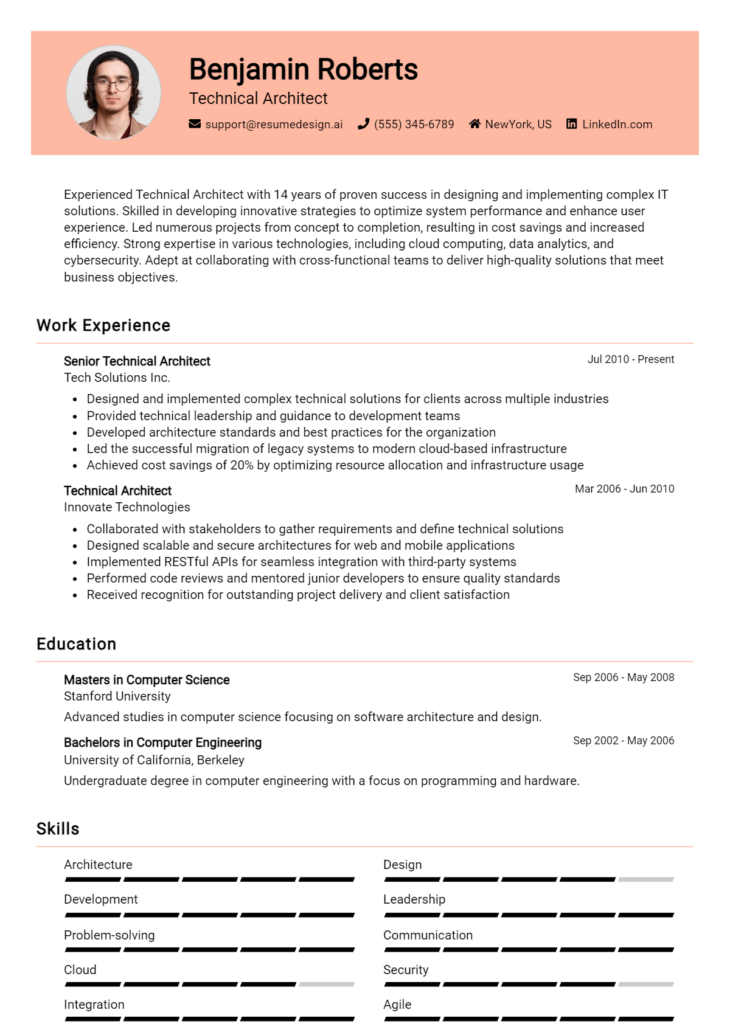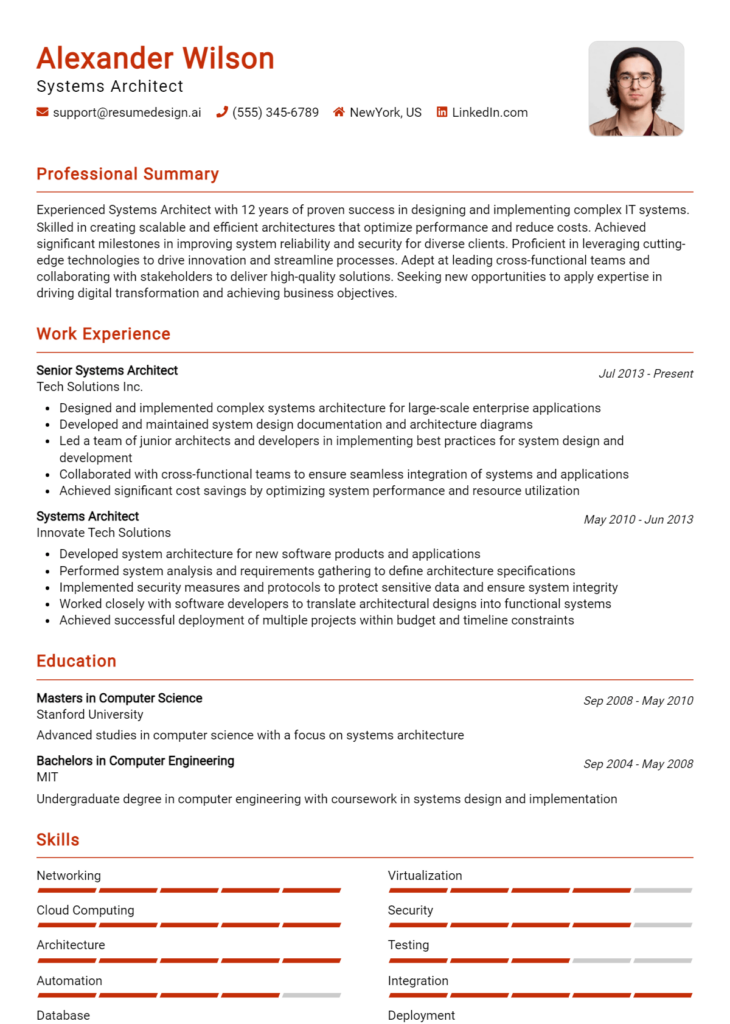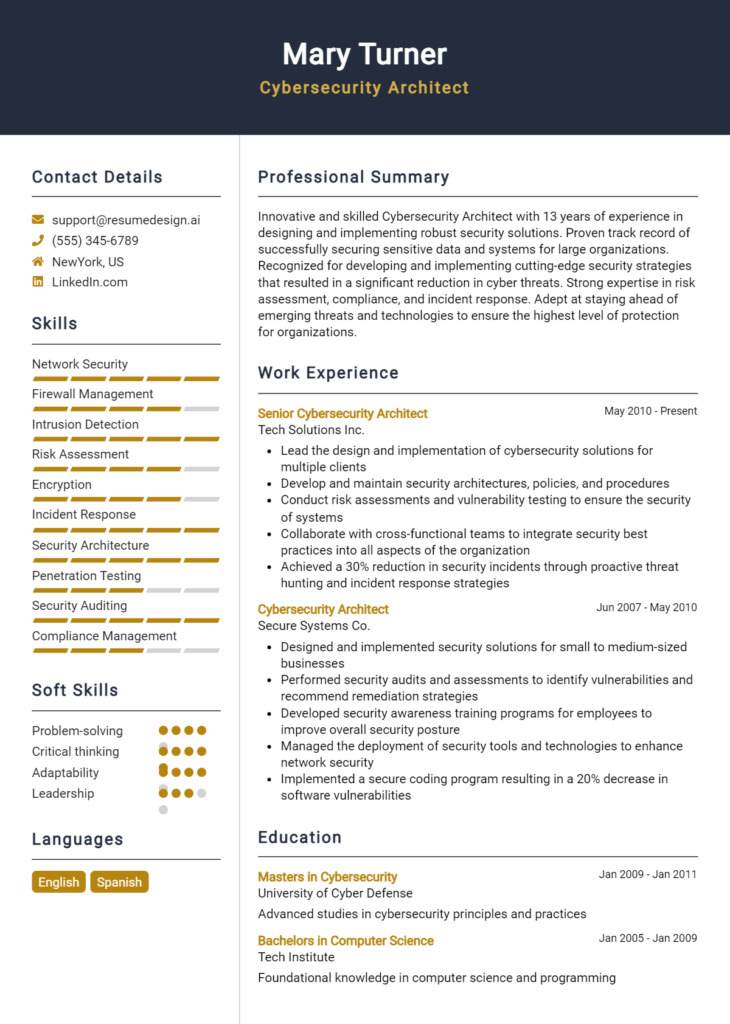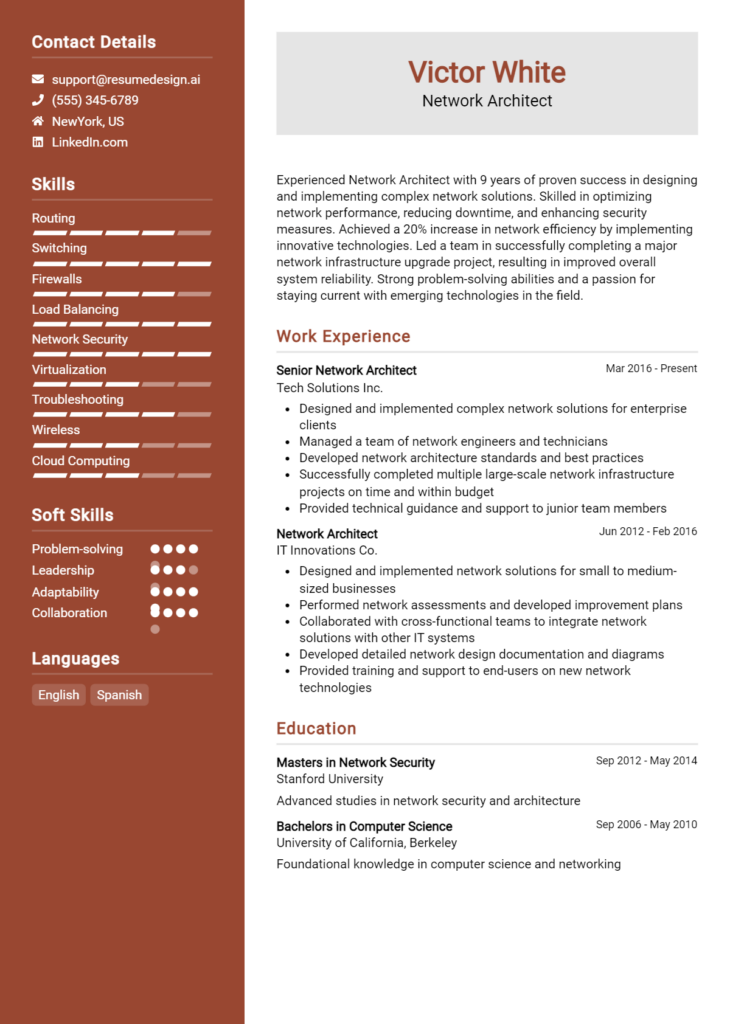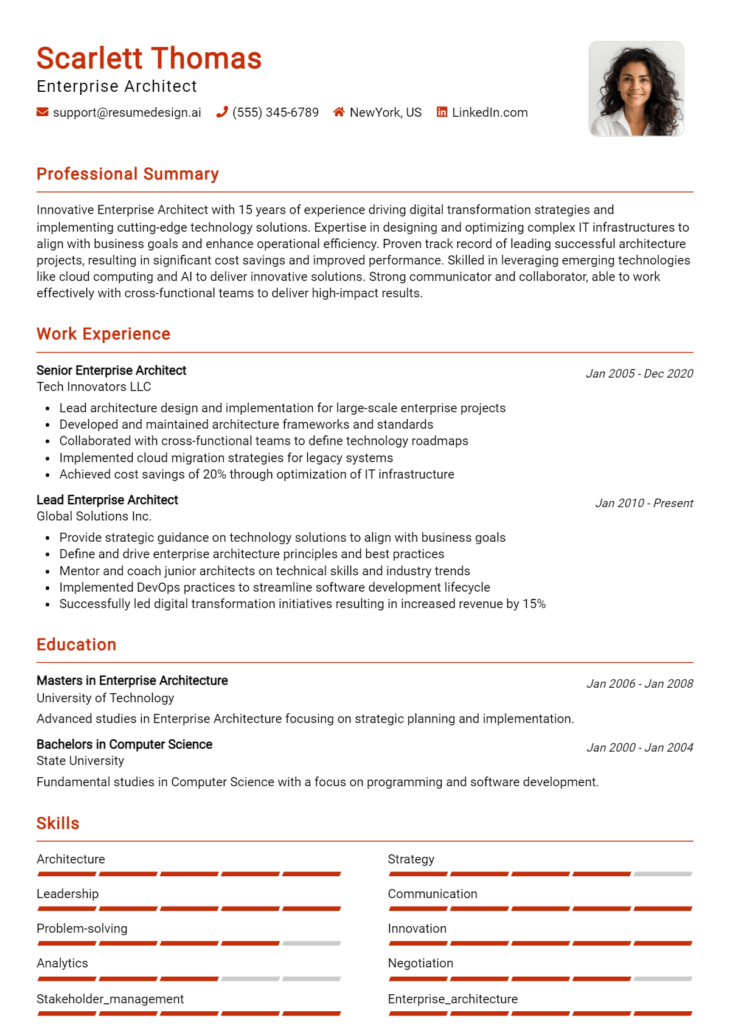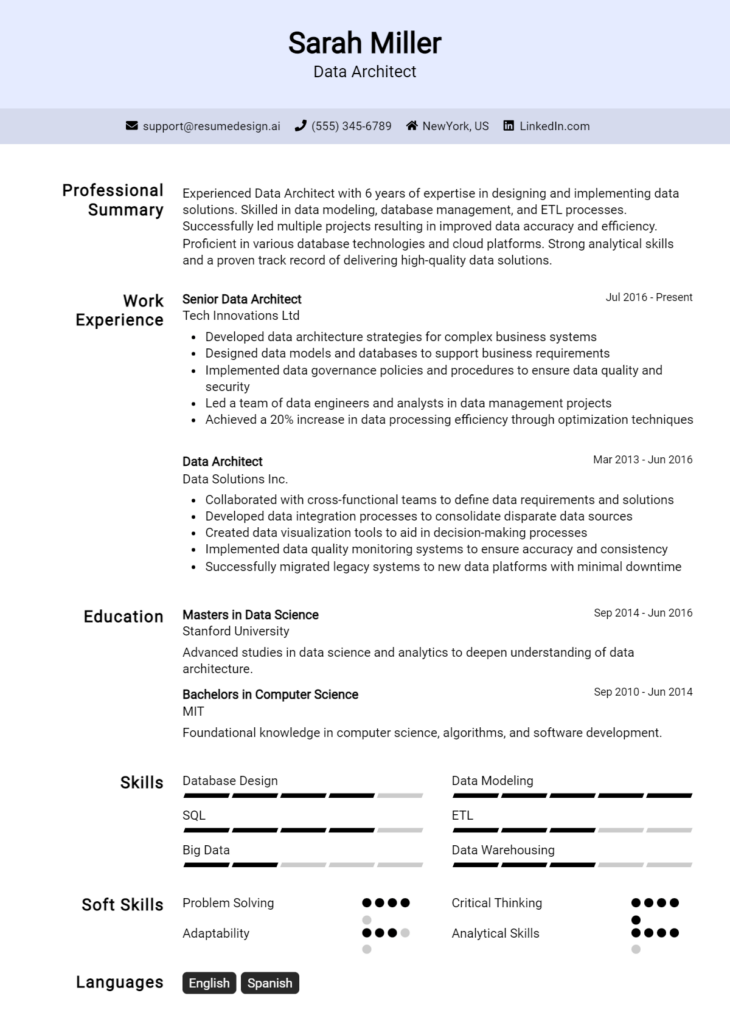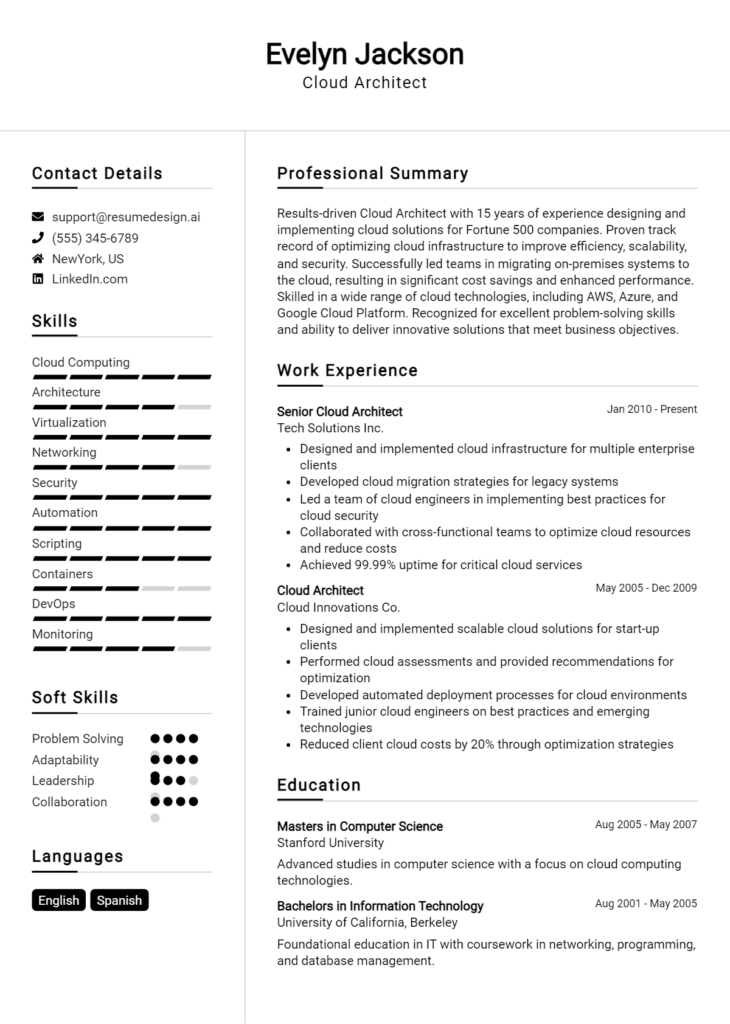Software Architect Core Responsibilities
A Software Architect plays a crucial role in designing and implementing complex software solutions, bridging the gap between technical teams and business stakeholders. Key responsibilities include assessing system architecture, ensuring scalability, and aligning technology with organizational goals. Essential skills encompass technical expertise, operational insight, and advanced problem-solving abilities, enabling effective collaboration across departments. A well-structured resume that highlights these qualifications can significantly enhance a candidate's appeal, showcasing their potential to drive organizational success.
Common Responsibilities Listed on Software Architect Resume
- Designing and implementing software architecture solutions.
- Collaborating with cross-functional teams to define requirements.
- Evaluating and selecting appropriate technologies and tools.
- Providing technical guidance and mentoring to development teams.
- Conducting code reviews to ensure quality and best practices.
- Identifying and mitigating risks associated with software projects.
- Documenting architectural decisions and guidelines.
- Monitoring and optimizing system performance.
- Engaging with stakeholders to gather and clarify project requirements.
- Staying updated with industry trends and emerging technologies.
- Facilitating communication between technical and non-technical teams.
- Ensuring compliance with security and regulatory standards.
High-Level Resume Tips for Software Architect Professionals
In the competitive world of software architecture, a well-crafted resume is essential for professionals looking to make a strong first impression on potential employers. Your resume often serves as the initial point of contact, making it crucial to effectively communicate not just your technical skills but also your achievements and experiences. A great resume should reflect your ability to design and implement complex systems, while also showcasing your leadership and collaboration skills. This guide will provide practical and actionable resume tips specifically tailored for Software Architect professionals, helping you to stand out in a crowded job market.
Top Resume Tips for Software Architect Professionals
- Tailor your resume to the job description by incorporating relevant keywords and phrases that match the requirements of the position.
- Showcase your relevant experience, emphasizing projects where you played a key role in architectural design, implementation, or leadership.
- Quantify your achievements with specific metrics, such as performance improvements, cost savings, or project timelines, to demonstrate your impact.
- Highlight industry-specific skills, including familiarity with architectural frameworks, programming languages, and cloud technologies.
- Include a summary statement at the top of your resume that encapsulates your expertise and what you bring to the role.
- Utilize clear and concise language, avoiding jargon unless it's widely recognized in the industry.
- Incorporate a section for certifications and continuous education, showcasing your commitment to staying current in the field.
- Use bullet points for easy readability and to emphasize key accomplishments and responsibilities.
- Keep your resume to a maximum of two pages, focusing on the most relevant information to the position you are applying for.
- Consider including a link to your portfolio or GitHub profile to provide tangible examples of your work.
By implementing these tips, you can significantly enhance your resume and increase your chances of landing a job in the Software Architect field. A well-structured and thoughtfully crafted resume not only showcases your technical expertise but also demonstrates your professionalism and attention to detail, making you a more attractive candidate to potential employers.
Why Resume Headlines & Titles are Important for Software Architect
In the competitive field of software architecture, a well-crafted resume headline or title plays a crucial role in catching the eye of hiring managers. A strong headline serves as a succinct summary of a candidate's key qualifications and expertise, immediately conveying their relevance to the job at hand. It should encapsulate essential skills and experiences in a way that not only grabs attention but also sets the tone for the rest of the resume. By ensuring that the headline is concise, relevant, and directly related to the position being applied for, candidates can significantly enhance their chances of making a positive first impression.
Best Practices for Crafting Resume Headlines for Software Architect
- Keep it concise: Aim for a single impactful phrase or sentence.
- Be role-specific: Tailor the headline to reflect the specific software architect position.
- Highlight expertise: Include key skills or areas of specialization relevant to software architecture.
- Use action-oriented language: Choose dynamic words that convey confidence and capability.
- Incorporate industry keywords: Utilize terminology commonly found in job descriptions to improve visibility.
- Showcase achievements: If possible, include notable accomplishments that demonstrate your impact.
- Avoid jargon: Ensure the language is clear and accessible to hiring managers who may not have a technical background.
- Revise for clarity: Edit to ensure the headline is easily understandable and free of ambiguity.
Example Resume Headlines for Software Architect
Strong Resume Headlines
"Senior Software Architect with 10+ Years in Cloud Solutions and Microservices"
"Innovative Software Architect Specializing in Scalable Application Design"
"Results-Driven Software Architect with Proven Track Record in Agile Methodologies"
"Expert Software Architect Focused on Enhancing System Performance and Security"
Weak Resume Headlines
"Software Architect Looking for Jobs"
"Experienced Professional in IT"
"Hardworking Architect"
The strong headlines are effective because they not only highlight specific skills and experiences but also convey a sense of expertise and professionalism that resonates with hiring managers. They are tailored to the role and immediately communicate the candidate's value. In contrast, the weak headlines fail to impress due to their vagueness and lack of specificity, making it difficult for hiring managers to assess the candidate's qualifications or relevance to the position. A compelling headline should create an immediate connection with the reader, setting the stage for a deeper exploration of the resume.
Writing an Exceptional Software Architect Resume Summary
A well-crafted resume summary is crucial for a Software Architect, as it serves as the first impression for hiring managers. This brief section of your resume quickly captures attention by showcasing your key skills, relevant experience, and notable accomplishments tailored to the specific job you are applying for. An impactful summary not only highlights your technical proficiency but also reflects your understanding of architectural principles and design patterns, setting the stage for a compelling narrative about your career. It should be concise yet powerful, giving a snapshot of what makes you a standout candidate in a competitive field.
Best Practices for Writing a Software Architect Resume Summary
- Quantify Achievements: Use specific numbers to demonstrate the impact of your work (e.g., "Reduced system downtime by 30%").
- Focus on Relevant Skills: Highlight key technical skills and methodologies that align with the job description.
- Tailor for Each Application: Customize your summary to reflect the specific requirements and priorities of the job you are applying for.
- Use Industry Terminology: Incorporate terminology and buzzwords relevant to software architecture to resonate with hiring managers.
- Keep it Concise: Aim for 3-5 sentences that deliver maximum information without overwhelming the reader.
- Showcase Leadership: Mention any experience leading teams or projects, as leadership is crucial in architectural roles.
- Highlight Problem-Solving Skills: Emphasize your ability to address complex challenges and deliver innovative solutions.
- Include Certifications: If applicable, mention any relevant certifications that bolster your qualifications as an architect.
Example Software Architect Resume Summaries
Strong Resume Summaries
Dynamic Software Architect with over 10 years of experience in designing scalable systems, resulting in a 40% increase in performance efficiency. Expert in microservices architecture and cloud solutions, having successfully led a cross-functional team to migrate legacy systems to AWS, reducing operational costs by 25%.
Results-driven Software Architect with a proven track record of delivering robust software solutions. Spearheaded a project that redesigned the application architecture, decreasing load times by 50% and enhancing user satisfaction scores by 30%.
Innovative Software Architect specializing in enterprise-level applications. Developed a modular architecture that improved deployment times by 70%, and mentored junior developers, fostering a collaborative team environment that increased productivity by 15%.
Experienced Software Architect with a solid background in both front-end and back-end development. Played a key role in an agile transformation, enhancing project delivery speed by 60% and ensuring system reliability through comprehensive testing protocols.
Weak Resume Summaries
Software Architect with experience in the industry. Good at designing systems and working with teams.
An ambitious Software Architect seeking new opportunities. I have worked on various projects and have some skills in software design.
The examples of strong resume summaries stand out due to their use of quantifiable achievements, specific skills, and a clear alignment with the expectations of the Software Architect role. They effectively communicate the candidate's value proposition and demonstrate a results-oriented mindset. In contrast, the weak summaries lack detail and specificity, making them appear generic and uninspiring. They fail to convey the candidate's unique contributions or the impact of their work, which can leave hiring managers unimpressed.
Work Experience Section for Software Architect Resume
The work experience section of a Software Architect resume is crucial as it serves as a comprehensive display of the candidate's technical skills, leadership capabilities, and track record of delivering high-quality products. This section not only highlights the depth of experience in designing and implementing software architecture but also emphasizes the ability to manage and collaborate with diverse teams. By quantifying achievements and aligning past experiences with industry standards, candidates can effectively demonstrate their value to potential employers and set themselves apart in a competitive job market.
Best Practices for Software Architect Work Experience
- Highlight specific technologies and frameworks used in previous roles to showcase technical expertise.
- Quantify achievements with metrics, such as performance improvements or cost reductions, to demonstrate impact.
- Showcase leadership skills by detailing team management and mentorship experiences.
- Emphasize collaboration by describing cross-functional projects and stakeholder engagement.
- Tailor each experience to align with the job description and industry standards.
- Use action verbs to convey a sense of initiative and responsibility.
- Include relevant certifications or training that enhance your qualifications.
- Keep descriptions concise and focused on results, avoiding unnecessary jargon.
Example Work Experiences for Software Architect
Strong Experiences
- Led a team of 10 developers in the successful migration of a legacy system to a microservices architecture, resulting in a 40% increase in application performance and a 30% reduction in operational costs.
- Designed and implemented a cloud-based solution that improved system scalability, handling a 200% increase in user traffic without downtime.
- Collaborated with product management and UX teams to deliver a new feature set, increasing user engagement by 25% and leading to a 15% increase in customer retention rates.
Weak Experiences
- Worked on various software projects using different technologies.
- Participated in team meetings to discuss project progress.
- Helped troubleshoot issues in the software development process.
The strong experiences listed above are considered effective because they provide specific examples of achievements, quantify the results, and demonstrate leadership and collaboration in a tangible way. In contrast, the weak experiences lack detail and measurable outcomes, making them less impactful and failing to illustrate any significant contributions or technical expertise. This highlights the importance of being specific and results-oriented when detailing work experience on a resume.
Education and Certifications Section for Software Architect Resume
The education and certifications section of a Software Architect resume is crucial for showcasing the candidate's academic qualifications and commitment to professional development. This section not only highlights the formal education that provides foundational knowledge in software engineering and architecture but also emphasizes industry-relevant certifications that validate the candidate's expertise and skills. By including relevant coursework, specialized training, and ongoing learning endeavors, candidates can significantly enhance their credibility and demonstrate their alignment with the job role, making them more appealing to potential employers.
Best Practices for Software Architect Education and Certifications
- Focus on relevant degrees in Computer Science, Software Engineering, or related fields.
- Include industry-recognized certifications such as TOGAF, AWS Certified Solutions Architect, or Microsoft Certified: Azure Solutions Architect Expert.
- Highlight any specialized training in software architecture methodologies, design patterns, or specific technologies.
- Provide details on relevant coursework that aligns with software architecture principles, such as system design, cloud computing, and data management.
- Use clear and concise formatting to improve readability and ensure key information stands out.
- Prioritize the most recent and relevant certifications to demonstrate continuous learning and expertise.
- Avoid including outdated or irrelevant qualifications that do not support the role of a software architect.
- Customize the section for each application to reflect the specific requirements of the job description.
Example Education and Certifications for Software Architect
Strong Examples
- M.S. in Software Engineering, Stanford University, 2020
- AWS Certified Solutions Architect – Associate, 2022
- TOGAF 9 Certified, The Open Group, 2021
- Relevant Coursework: Advanced Software Architecture, Cloud Computing, and Microservices Design
Weak Examples
- B.A. in History, University of California, 2015
- Certification in Basic Web Development, 2010
- Outdated Java Programming Certification, 2018
- High School Diploma, 2008
The strong examples are considered effective because they feature advanced degrees and certifications that are current and directly applicable to the role of a Software Architect. They emphasize relevant coursework that aligns with modern software architecture principles. In contrast, the weak examples lack relevance to the field, either due to outdated or unrelated qualifications and certifications that do not meet the expectations for a seasoned Software Architect. This distinction helps employers quickly assess the candidate’s suitability for the position.
Top Skills & Keywords for Software Architect Resume
In the competitive field of software architecture, having the right skills is crucial for crafting a compelling resume. A well-structured resume highlights not only technical proficiency but also the soft skills that facilitate collaboration and innovation in software design and implementation. As a Software Architect, your ability to communicate complex ideas, lead teams, and adapt to changing technologies can significantly influence your career trajectory. Therefore, showcasing both your hard and soft skills effectively can set you apart from other candidates, making it essential to understand what employers are looking for.
Top Hard & Soft Skills for Software Architect
Soft Skills
- Excellent Communication
- Leadership and Team Management
- Problem-Solving
- Critical Thinking
- Adaptability
- Collaboration
- Time Management
- Conflict Resolution
- Creativity
- Decision-Making
Hard Skills
- Software Development Lifecycle (SDLC)
- Cloud Computing (AWS, Azure, Google Cloud)
- Architecture Design Patterns (Microservices, SOA)
- Programming Languages (Java, C#, Python)
- Database Management (SQL, NoSQL)
- API Design and Development
- DevOps Practices
- Security Standards and Compliance
- Agile Methodologies (Scrum, Kanban)
- Infrastructure as Code (IaC)
Equipping your resume with these skills allows you to present a well-rounded profile to potential employers. Additionally, including relevant work experience that showcases your expertise in these areas will further strengthen your application.
Stand Out with a Winning Software Architect Cover Letter
Dear [Hiring Manager's Name],
I am writing to express my interest in the Software Architect position at [Company Name], as advertised on [where you found the job listing]. With over [X years] of experience in software development and architecture, I have honed my ability to design scalable and maintainable systems that meet complex business requirements. My expertise in various programming languages, cloud technologies, and architectural patterns has equipped me with the knowledge necessary to contribute effectively to your team.
In my previous role at [Previous Company Name], I successfully led a team of developers in designing a microservices architecture that improved system performance by 40% and reduced deployment times by half. My hands-on experience with tools like AWS, Docker, and Kubernetes allowed us to implement DevOps practices that streamlined our workflow and enhanced collaboration across departments. Additionally, I have a solid understanding of data modeling and API design, enabling me to create solutions that are both robust and user-friendly.
I am particularly drawn to [Company Name] because of its commitment to innovation and excellence in technology. I am excited about the opportunity to collaborate with a talented team and leverage my skills to tackle challenging projects that drive business success. I am confident that my proactive approach to problem-solving and my passion for staying current with industry trends will make me a valuable asset to your organization.
Thank you for considering my application. I look forward to the possibility of discussing how my background, skills, and enthusiasms align with the goals of [Company Name]. I am eager to contribute to the success of your projects and help shape the future of software architecture within your esteemed company.
Sincerely,
[Your Name]
[Your Phone Number]
[Your Email Address]
Common Mistakes to Avoid in a Software Architect Resume
When crafting a resume for a Software Architect position, it's crucial to present your skills and experiences effectively. However, many candidates make common missteps that can hinder their chances of landing an interview. Avoiding these pitfalls can significantly enhance the clarity and impact of your resume, ensuring that it aligns with the expectations of hiring managers looking for top-tier architectural talent. Here are some common mistakes to steer clear of:
Lack of Focus on Architecture Skills: Failing to highlight specific architectural skills and methodologies (like microservices, cloud architecture, etc.) can make your resume seem generic.
Overemphasis on Technical Skills: While technical prowess is essential, emphasizing soft skills such as communication, leadership, and collaboration is crucial for an architect role.
Neglecting to Showcase Leadership Experience: Software Architects often lead teams and projects. Not including relevant leadership or mentoring experience can be a missed opportunity to demonstrate your capability.
Inadequate Project Descriptions: Brief, vague project descriptions may not clearly illustrate your contributions. Use metrics and specific outcomes to showcase your impact.
Using Jargon Without Explanation: Overloading your resume with technical jargon can alienate non-technical hiring managers. Ensure clarity by explaining complex terms when necessary.
Ignoring Industry Best Practices: Not mentioning familiarity with industry standards or best practices in software design can signal a lack of up-to-date knowledge.
Failing to Tailor the Resume: Submitting a generic resume without tailoring it to the specific job description can result in a missed connection with the employer's needs.
Omitting Continuous Learning: In the rapidly evolving tech landscape, not mentioning ongoing education or certifications may indicate a lack of commitment to professional growth.
Conclusion
As we explored the multifaceted role of a Software Architect, we highlighted the essential skills, responsibilities, and the significance of strategic thinking in designing robust software solutions. A Software Architect not only needs to have a deep understanding of technology but also the ability to communicate effectively with stakeholders and lead development teams. Understanding architectural patterns, cloud technologies, and best practices in software development is crucial for success in this role.
With the ever-evolving tech landscape, continuous learning and adapting to new methodologies are vital. Moreover, your resume should reflect not just your technical expertise but also your leadership qualities and project management experiences.
Now is the perfect time to review and enhance your Software Architect resume. To assist you in this process, consider utilizing tools such as resume templates, which provide a solid foundation for your document. You can also leverage the resume builder for a more customized approach, ensuring your resume stands out in a competitive job market. Additionally, check out resume examples for inspiration and cover letter templates to complement your application package.
Take action today—revamp your resume and position yourself as a leading candidate in the Software Architect field!

